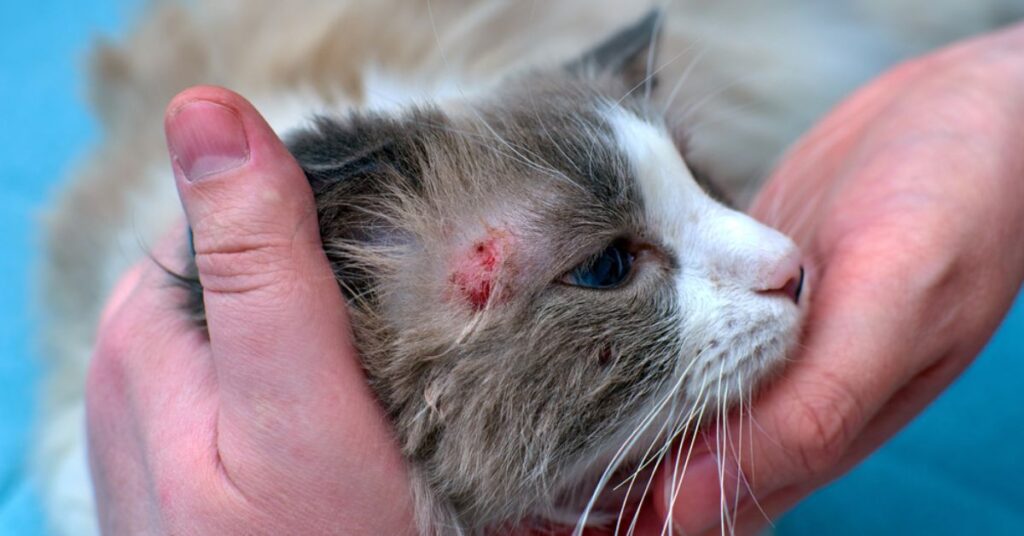Are Tarantulas Poisonous To Cats?-Complete Guide
For Cat proprietors who are likewise 8-legged creature devotees, a typical concern is whether tarantulas are poisonous and safe for Cats?
There are various kinds of tarantulas, and it is plausible that some of the venom could be poisonous to Cats.
In this article, we’ll dig into the connection between tarantulas and Cats, analyzing whether tarantulas are poisonous to Cats, the expected dangers, and how to guarantee the security of the two pets.
Grasping Tarantula venom:
In the first place, it’s vital to explain that tarantulas are evil, not poisonous. The venom is infused through a chomp, while poison should be ingested or retained. Tarantulas use venom to repress their prey, which is generally comprised of bugs and other little creatures.
The venom of most tarantula species is gently contrasted with that of different spider, similar to the dark widow or earthy-coloured hermit.
Also Read: Do German Shepherds Have High Prey Drive?-Complete Guide
Expected Dangers to Cats:
1. Bits and venom:
The essential worry with tarantulas and Cats is the chance of a bite. In the event that a Cat was to bug a tarantula, the bug could bite justifiably. For most tarantula species, a chomp could bring about gentle side effects like confined torment, enlarging, and redness in a Cat.
Nonetheless, these side effects can change in light of the size and health of the Cat and the particular types of tarantula. A few bigger types of tarantulas, similar to the Goliath bird eater (Theraphosa blondi), have more strong venom.
Yet, even these chomps are probably not going to be deadly to a solid grown-up Cat. For little cats, older Cats, or those with compromised health, a chomp might actually cause more serious responses and ought to be dealt with quickly by a veterinarian.
2. Allergic Reactions:

Very much like people, Cats can have hypersensitive responses to bugs and 8-legged creature bites. Hypersensitive response to a tarantula bite could appear as serious enlarging, trouble breathing, or anaphylactic shock in outrageous cases. These responses are intriguing. However, they can be serious and require quick veterinary consideration.
Tarantula Defence Mechanisms:
Past gnawing, tarantulas have another safeguard component that could influence Cats: urticating hairs. These are small, pointed hairs that a few New World tarantulas (species from the Americas) can flick off their midsection when compromised.
These hairs can make bothering a Cat’s skin, eyes, and respiratory parcel in the event that they come into contact. Side effects could incorporate tingling, wheezing, pawing at the face, and, in extreme cases, respiratory misery.
Preventing Interactions:
1. Habitat Separation:
The most effective way to forestall any issues is to keep tarantulas and Cats discrete. Tarantulas ought to be housed in secure, escape-confirmation nooks that are kept far away from curious Cats. Guaranteeing that the tarantula’s living space is steady and can’t be pushed over or gotten to by a Cat is essential.
2. Supervised Interaction:
If you have any desire to acquaint your Cat with your tarantula, consistently do so under close watch. Notice the two creatures’ ways of behaving intently and be prepared to intercede at the earliest hint of hostility or stress from one or the other party.
Also Read: Do German Shepherds Have Curly Tails?-Complete Guide
What to Do in the Event that Your Cat is bitten?
1. Immediate Actions:
In the event that you suspect a tarantula has bitten your Cat, notice the bite region for enlarging and redness. Keep your Cat quiet and screen for any indications of an unfavourably susceptible response, for example, trouble breathing or exorbitant enlarging.
2. Veterinary Consideration:

Reaching your veterinarian for advice is astute. While most tarantula chomps are not hazardous, a vet can give treatment to mitigate torment and forestall contamination. If you notice any serious side effects, look for crisis veterinary consideration right away.
Protecting Your Pets:
1. Safe Tarantula Housing:
Guarantee your tarantula’s nook is secure, and put it where your Cat can’t get to it. Use terrariums with locking tops and put the nook on a steady, raised surface if conceivable.
2. Cat Advancement:
Furnish your Cat with a lot of toys and exercises to keep them invigorated and diminish interest in the tarantula. Cat trees, scratching posts, and intuitive toys can redirect their consideration from the tarantula’s nook.
Preventive Measures:
1. Secure Enclosure:
- Quality Nook: Put resources into a tough, escape-evidence nook for your tarantula. The top ought to be safely secured to keep the tarantula from getting away and to hold the Cat back from getting to it.
- Raised Position: Put the nook on a high rack or a household item that the Cat can only reach with significant effort. That decreases the Cat’s interest and expected admittance.
2. Physical Barriers:

- Room Division: If conceivable, keep the tarantula in a different room that the Cat can’t get to. This actual partition is one of the best ways of forestalling collaborations.
- Baby Doors: Use child entryways or different boundaries to limit the Cats admittance to the region where the tarantula’s fenced-in area is found.
3. Training and Deterrents:
- Training: Train your Cat to avoid the tarantula’s walled-in area by utilizing uplifting feedback procedures. Reward the Cat for avoiding the region.
- Deterrent Sprays: Use pet-safe obstacle splashes around the tarantula’s fenced-in area. These showers have fragrances that Cats see as terrible. However, they are innocuous.
4. Observing and Management:
- Regulated Time: Assuming the Cat and tarantula are in a similar room, guarantee that connections are directed. Watch out for the two creatures to mediate if important.
- Ordinary Checks: Now and again, really look at the tarantula’s nook to guarantee it stays secure and that there are no indications of altering by the Cat.
5. Health Precautions:
- Veterinary Exhortation: Talk with a veterinarian about the expected dangers of tarantula hairs or venom to your Cat. Grasp the side effects of openness and have an arrangement set up for a speedy reaction.
- Survival kit: Keep an essential medical aid unit for your Cat, including therapies for expected disturbances from tarantula hairs.
6. Stress Decrease:
- Tarantula Climate: The tarantula has a lot of concealing spots inside its nook to diminish pressure. An agreeable and secure climate will cause the tarantula to be less inclined to feel compromised and show protective ways of behaving.
- Limit Disturbances: Keep the region around the tarantula’s walled-in area quiet and calm. Stay away from unexpected developments or noisy clamours that could surprise either the Cat or the tarantula.
Also Read: Are German Shepherds Picky Eaters?-Complete Guide
FAQ’s:
1. What occurs in the event that a Cat eats a tarantula?
Most bugs are not evil to Cats and, whenever eaten, could cause just gentle gastrointestinal surprise, if any whatsoever.
2. Could tarantulas at any point hurt pets?
Fortunately, on the grounds that tarantula venom is intended to cripple little creatures, your dog go is probably going to be alright whenever bite.
3. How poisonous is a tarantula?
Tarantulas are venomous. However, the impacts of the venom of tarantulas native to North America are regularly gentle in people and just objective agony at the bite site.
4. Do Cats wind up dead by bugs?
Bite from spiders and other venomous animals like snakes and scorpions can be lethal to pets, particularly Cats.
Conclusion:
While tarantulas are venomous, the gamble they pose to Cats is generally low with appropriate insurance. Most tarantula chomps cause just gentle side effects in Cats; however, hypersensitive responses are plausible. The huge gamble comes from urticating hairs, which can cause bothering.
By keeping tarantulas in secure walled-in areas and guaranteeing Cats don’t approach them, you can partake in the friendship of the two pets securely. In the event that a bite happens, screen your Cat intently and look for veterinary consideration, depending on the situation.
With just the right amount of care and consideration, tarantula and Cat proprietors can exist together calmly, partaking in the remarkable qualities of both their 8-legged creature and cat companions.






